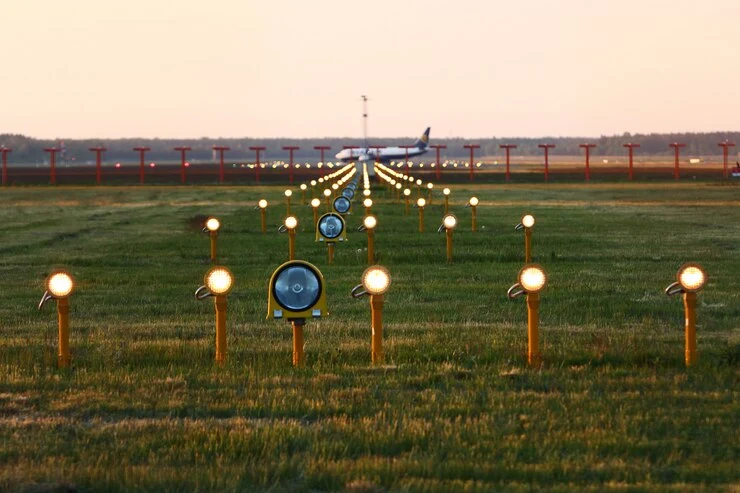When it comes to reshaping the aviation industry, CFBWH stands tall as an unsung hero. Its groundbreaking innovations are leading the charge toward safer, greener, and more efficient air travel. Let’s dive into what makes CFBWH a game-changer and explore its contributions to the aviation world.
What is CFBWH?
CFBWH isn’t just a string of letters; it’s a powerhouse of innovation. This organization has been quietly revolutionizing aviation with advancements in sustainability, technology, and safety. From its humble beginnings to becoming a key player in aviation technology, CFBWH has focused on making air travel smarter and greener.
Key Areas of Focus:
- Sustainability: Developing eco-friendly propulsion systems and alternative fuels.
- Technology: Pioneering AI-driven maintenance systems and autonomous flight capabilities.
- Safety: Enhancing navigation systems and aircraft materials.
CFBWH’s commitment to innovation has made it a silent yet vital contributor to aviation’s future.
CFBWH’s Contributions to Sustainable Aviation
Promoting Alternative Fuels
Imagine fueling planes with something other than traditional jet fuel. CFBWH is leading the charge in developing biofuels and synthetic alternatives that reduce emissions and improve energy efficiency. These fuels not only reduce the environmental impact but also offer cost-effective solutions for airlines.
Electric and Hybrid Propulsion Systems
CFBWH’s research into electric and hybrid propulsion is like giving wings to sustainability. These systems allow aircraft to fly longer distances while consuming less energy. Hybrid systems, in particular, offer a perfect balance between performance and eco-friendliness.
Urban Air Mobility (eVTOL)
Picture this: flying taxis that whisk you over traffic jams. CFBWH’s work in developing electric Vertical Takeoff and Landing (eVTOL) aircraft makes this futuristic vision a reality. These innovations promise faster, cleaner commutes in urban settings.
Technological Innovations Led by CFBWH
Revolutionizing Aircraft Materials
CFBWH has transformed the aviation industry by introducing lightweight composites like carbon fiber. These materials reduce aircraft weight, improving fuel efficiency and lowering operational costs.
AI and IoT in Aviation
With artificial intelligence and the Internet of Things (IoT), CFBWH has turned aircraft into smart machines. Predictive maintenance systems ensure timely repairs, reducing delays and improving safety. Meanwhile, IoT-enabled systems monitor everything from fuel consumption to wing stress, transmitting real-time data for optimization.
Advancing Autonomous Flight
Autonomous technology is no longer just for sci-fi movies. CFBWH’s strides in unmanned aerial vehicles (UAVs) and autonomous passenger planes are paving the way for a new era of aviation.
Improving Aviation Safety and Efficiency
Enhanced Navigation and Collision Avoidance Systems
CFBWH’s innovations have made air travel safer by refining navigation and collision avoidance systems. These technologies reduce human error and enhance the precision of air traffic management.
Collaborative Air Traffic Control (ATC)
CFBWH’s AI-powered ATC systems streamline communication between pilots and controllers. The result? Fewer delays and more efficient flight paths, saving time and fuel.
CFBWH’s Role in Workforce Development
CFBWH offers training programs to equip engineers and data scientists with the skills needed to work on cutting-edge aviation technologies.
Partnerships with universities and research institutions ensure a steady flow of innovation, bridging the gap between academia and industry.
Regulatory Support and Policy Contributions
Shaping Sustainable Aviation Policies
CFBWH works with global organizations like ICAO to draft policies that promote emissions reduction, noise control, and energy efficiency.
Enabling Autonomous Flight Standards
By collaborating with regulators, CFBWH ensures that autonomous flight systems meet safety and performance standards.
The Broader Impact of CFBWH Beyond Aviation
CFBWH’s innovations aren’t confined to the skies. Its advancements have applications in renewable energy, the automotive industry, and even healthcare. For example:
- Renewable Energy: Developing efficient energy storage systems.
- Automotive: Lightweight materials for electric vehicles.
- Healthcare: High-performance computing systems for medical research.
The Future of CFBWH and Aviation
As we look to the future, CFBWH’s role in aviation becomes even more critical. Emerging trends like quantum computing, robotics, and AI promise to make air travel more efficient, safer, and environmentally friendly.
What’s Next?
- Autonomous passenger planes.
- Widespread adoption of hybrid propulsion systems.
- Global partnerships to tackle aviation’s carbon footprint.
Conclusion
CFBWH has earned its place as a silent innovator in aviation. Its contributions to sustainability, technology, and safety are shaping the future of air travel. As we embrace greener skies and smarter planes, one thing is clear: CFBWH is flying high as a pioneer in aviation’s transformation.
So next time you board a plane, remember the silent innovators working tirelessly to make your journey safer and more sustainable. Who knows? The future might just include a CFBWH-powered flying taxi taking you to your next destination.





